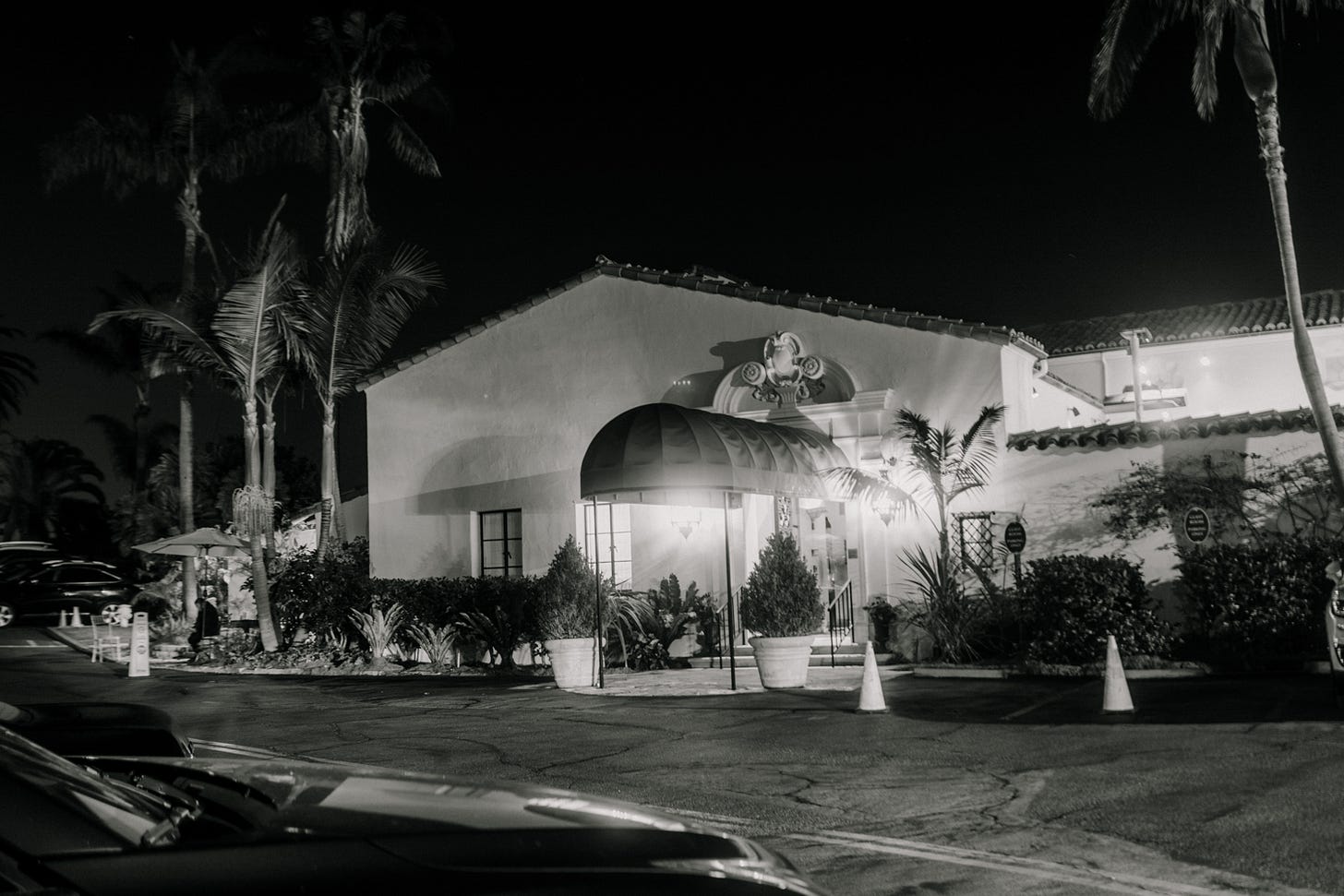In 1947, Dorothy B. Hughes published a brilliant, first of its kind novel, In A Lonely Place. It is one of my favorite books, and not just because it’s a geographically accurate document of post-war Los Angeles—its a terrifying, insightful peek behind the curtain of murderous misogyny. And the reveal of its horror, a masterpiece of feminist detecting, is one of the most masterfully unfurled noir mysteries of all time.

For this very special Halloween issue of Take Surface Streets, I am proud and pleased to collaborate with the intensely talented photographer and my friend, Elizabeth Weinberg. The brilliant Times photographer and I drove through the dark Los Angeles of the book, documenting its haunting landscape.
If you haven’t read the book, I don’t want to ruin it for you. It’s a classic twist set up so perfectly that when it’s revealed you realize how much was given to you the entire time. Then again, it came out over 70 years ago, so, my bad—unlike the Bogart film directed by Nicholas Ray, the main character, Dixon Steele, is the serial killer who strangles women once a month. When he runs into his old war buddy, Brub, he is tantalized by his friend’s new profession: homicide detective for the Beverly Hills Police Department.
(Even with its drastic changes, the film version is still worth checking out. Instead of a smoldering build to unveil the murderer’s true nature, it’s a clever microscope on one man’s, innocent, broiling anger.)
What follows is a photo essay of Dixon Steele’s paranoid Westside of Los Angeles.
Enjoy.
Dixon stalks Wilshire Boulevard in Santa Monica, popping in and out of bars, corner stores, and cafes, prowling for his next victim.

Dixon, out late, fuming with unplaced hatred, follows a woman down to the beach, then loses her in the fog and the clattering traffic of the street.
After mishearing a loud woman in a bar, which angers him, he thinks of his friend from the war and the time they spent in England—a time in which he murdered his first love, the echo of all that would plague his evil streak to come—and decides to ring him up, knowing he had relocated to Los Angeles. Brub and his wife, Sylvia, one of the novel’s two true detectives, ask him to meet and catch up at their local haunt: a beachside country club.
After he delicately pries for information about the murder case Brub is working on, obviously one which Dix knows he is the offender, he drives home with an arrogant anger, noting how often he scales and descends the California Incline.

He drives back to his apartment in Beverly Hills, where he meets a brilliantly beautiful neighbor he becomes obsessed with. Her name is Laurel Gray. She, along with Brub’s wife Sylvia, will be his ultimate demise.
The houses in his neighborhood would have looked like this.
And the streets like Beverly Glen, where Dix deposits a body, more canyon country than strictly residential in the 1940s, would look like this.
Even before his suspicions, Brub would invite Dixon to his office to discuss the case. Dixon positioned himself as a crime writer, a clever ploy to explain his deadly knowledge and assumed wealth, while working as a device for Hughes’ to shade her male contemporaries and their macabre obsessions.
Brub, of course, worked at the Beverly Hills Police Station.
The Spanish Revivalist building was completed in 1932 and was said to be the largest and most expensive City Hall in the country.
Then he was alone, feeling his way off the porch and down the path into the darkness and the moist opaque fog.









